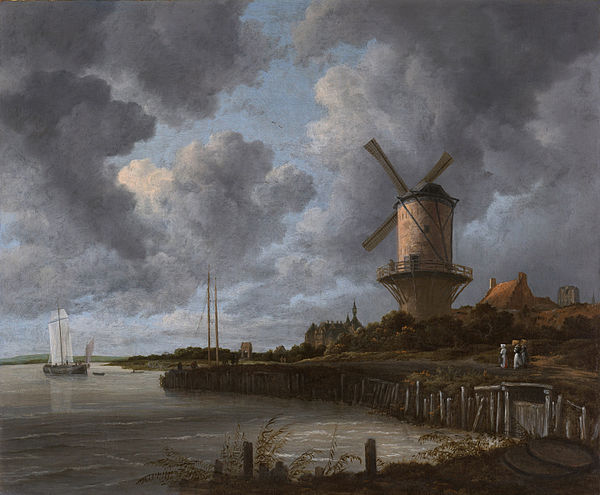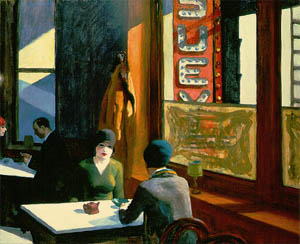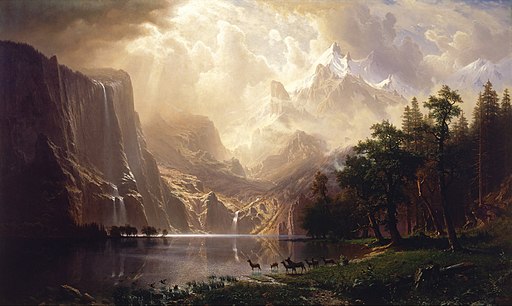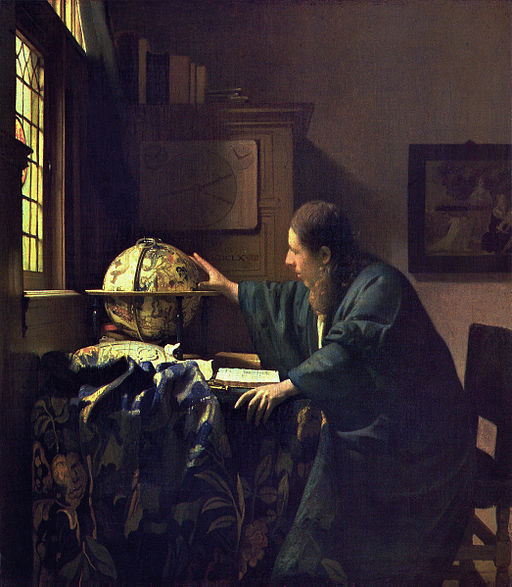Years ago a meddling DP ruined my great shot. Here’s what I learned from that experience.
I’d landed a job shooting part of an informercial on a beach south of San Francisco. The product was a retirement fund of some sort, and the concept required an elderly man to walk across stepping stones toward his retirement goals.
At some point the director asked for a wide shot that emphasized this gentleman’s heroic journey. I brought the camera way back, put it on a pad directly on the sand, and framed the distant stepping stones at the very bottom of the frame with broken clouds filling the top of the frame. (This was summer on the Northern California coast, so the weather was pretty bad. Traveling tip: visit in the spring or, better yet, the fall.) Based on our preproduction conversations, this seemed to be just the kind of dramatic shot that the director wanted: the man, tiny at the bottom of the frame, was dwarfed by nature and clearly struggling to reach his destination.
It so happened there was another DP on the set. He was someone I’d met when I’d first moved back to the area from Hollywood, and he’d retired a few years before. Now he was considering a comeback, and he’d asked the producer (a friend) if he could come along and visit the set to “get his feet wet.” Now he was sitting next to the director, right at the monitor, and it was becoming apparent that there were two DPs on the set: I’d frame and light the shot only to look over at video village and see the other DP whispering in the director’s ear, and then the director would ask me to change something. I grew quite frustrated but tried to keep my cool.
I’d no sooner framed this shot than the kibitzing DP leaned in with a whisper, and the director nodded and called over to me: “Less headroom!”
To my credit I retained my composure, tilted down and framed a considerably less interesting shot—fewer clouds, lots of sand, very boring—all because a visiting DP was able to sit next to the director, capture his ear, and impose his taste over mine.
I’ve collaborated with a lot of very visual directors, and I enjoy that considerably (it’s nice to speak the same language) but when I’m the one being paid to create images and a set visitor has more control over them than I do… well, I’ve not let that happen again. The image is between myself and the director, end of story.
Perhaps this other DP had never seen images like this:



“Headroom” is one of those weird concepts that students learn about in film school and carry to their graves. “Headroom must always be this much,” they are told. A friend once operated for a director who wanted everyone to have a “Warner Bros. haircut,” so called because close ups in Warner Bros. pictures from the 1950-60s cut off the top of the head. This works wonderfully in tight shots of faces but doesn’t work so well on wide shots, but the director insisted on the same framing when shooting on a 25mm lens as on a 85mm lens. The wide shots looked so odd that, during a film premiere, the projectionist assumed his projector was misadjusted and corrected the framing to include the full head on wide shots. The director was incensed!
Headroom, like anything else, is something that changes according to the mood and the story. There is no formula. There is only story, mood, and taste. And, when it comes to cinematic headroom, the concept is a very recent invention indeed.

A while back I found this clip that shows what an OMNIIMAX (dome) ground glass looks like:
The two rows of dotted lines below the crosshair delineate the “sweet spot.” Anything placed here will seen as directly ahead of the theater audience, or near enough depending on the row. The idea is that this is where important objects should be placed so they can be easily seen. In fact, the optical axis of the OMNIMAX (dome) frame is offset from the center:

It doesn’t matter if the image at the top of the frame isn’t optically perfect. The audience will rarely look that high: this portion of the frame is for peripheral vision only.
Let’s look at that beautiful Bierstadt landscape again:
The “optical center” of this painting is roughly the height of the person painting it. The painting itself will likely be hung on a wall such that the lower third or so becomes the viewing “sweet spot” as it will be dead ahead of the viewer, with the top of the frame filling the height of the wall. The viewer’s eye starts at the bottom of the picture, at the waterfall, up the cliffs at the left to the sky, across the sky to the trees at the right, down the trees to the deer at the bottom of the frame, and back to the waterfall. The center of action—for me it’s between the central waterfall and the deer—is at the bottom of the frame, directly in front of the viewer.
The top of the frame isn’t superfluous, but it’s not the focal point of the piece., It’s an important part of the overall composition but it’s not crucial to understanding the action at the bottom of the frame. It’s the 17th century equivalent of the OMNIMAX frame: it adds to the image, but it’s not crucial to understanding it. It’s meant to be viewed, but it’s not the crux of the action. At the same time the top and bottom of the frame are balanced, although they differ significantly: the top of the frame feels light and airy—the way a sky should—while the bottom feels dark and heavy.

The “optical center” of the frame is roughly the height of the globe. The perspective doesn’t tilt up or down, rather (like all the examples above) the vanishing point is at the head height of the artist. In photographic terms the “camera” is perfectly level, with the crosshairs aimed across the set at exactly a 90-degree angle to the floor. Given that the average artist isn’t terribly tall when sitting, and that portraits are often painted from a flat horizontal perspective rather than tilted up or down, the amount of headroom varied based on how close the artist was to the subject. When painting a landscape the artist was naturally far away from the subject and close to the ground, so it was only natural to paint bottom-weighted images that emphasized the broadness of the sky and put the action in the lower third of the frame. A figure study was a very different matter: closer artist, less headroom—but still more than we are used to today.
While the landscape above is large, this painting is fairly small (20″ tall) so Vermeer could have trimmed the headroom more closely. Instead he offset the subject horizontally but centered him vertically, creating a very powerful composition by making the subject’s head and back part of a triangle that’s completed by the window, the shadow of the dresser and the desk at the bottom of the frame.
There’s a lot we can learn about composition from paintings. Think about it this way: a painting generally hangs in a gallery, or on the wall of a home, surrounded by other paintings and works of art. Not only does it have to communicate a powerful story within its frame but it has to draw you to it and keep your attention. The better it does this the more chance it has of becoming an important part of someone’s collection (and, hopefully, a fat check in a painter’s wallet). Unlike moving images, which are often surrounded by black in one form or another and keep our attention through constant change, a painting hangs on a blank wall amidst lots of other things that vie for our attention. It’s fairly simple for the viewer to drift away from a mediocre image and search for something else that’s a bit more interesting.
I’ve found that I can create much more powerful compositions by using a few simple painting tricks. A quick Google search turns up lots of resources (for example, this blog series is a very interesting read), but the one I use the most is very simple. I look at the frame and move my eye around it in a clockwise circle, and then I try to notice what path my eye really wants to follow. Mostly I make sure that my eye wants to stay within the frame and not leave it. What attracts my eye? Is that attraction balanced elsewhere in the frame? Does it need to be balanced or can I leave it as it is to achieve the proper mood? Do I need to add something to the frame to keep my eye moving within it?
Still photographers know this: photographs are composed not just horizontally but vertically. It’s an easy trap for cinematographers to lose sight of this, not only due to the width of the frames we use (the wider the frame the harder it is to frame tall vertical objects, as they become very small very quickly) but because every image we create exists in relation to another image. There’s a shorthand, or a style, that everyone understands, and it can be difficult to convince our bosses to let us stray too far from that. (There are other considerations, such as the old rule that television is, by necessity, a medium of closeups due to the small size of the screen, that are slowly drifting away into obscurity as technology changes and tastes become more sophisticated.)
Placing a head in the vertical center of the frame would, under most circumstances, be frowned on in a TV series or a feature. It’s not something we’re used to seeing, and yet there’s very little reason not to do it. A somewhat recent TV series, Broadchurch, regularly did exactly that. Pay attention to how frames with lots of headroom are still balanced vertically, using a bit of architecture or action or, sometimes, blank space.
http://www.youtube.com/watch?v=HOnus6OvViM
Now take a look at this video, from Every Frame a Painting, that goes into even greater detail about balancing frames vertically as well as horizontally.
Not long ago, during a vacation to New York City, I found myself wandering through the Metropolitan Museum of Art. They have some lovely things there—lots of pottery and statues, if you’re into that kind of thing—but I always head straight for the paintings. For reasons unknown, sculpture does nothing for me. I want a picture with a frame around it!
I can’t tell you specifically who my favorite painters are. Most of them lived between 1500 and 1900. It’s probably easier to say who I don’t like, although I’m not going to do that here. Suffice to say I found myself in a little bit of heaven, wandering from gallery to gallery, when suddenly I found myself face-to-face with this:

This was by far the most “cinematic” painting I’d seen during my visit simply because it had what we in the industry would call “normal” headroom. There was nothing else like it in the gallery.
The painting is roughly 3’ tall, and it’s hung such that the figures within its borders are roughly at viewing height. This isn’t a distant landscape with open sky overhead; this is moody, intimate art that pulls the viewer right into the action. Add in that the perspective from which this picture was painted appears to be at the characters’ eye level and I’m drawn in even more: my viewpoint is the same as if I was standing right there with the subjects.
When I stood five or six feet from this painting I felt as if I was standing five or six feet from the people in it—so close that, if I’d been there, I’d have paid no attention to anything above the heads of the subjects.
After viewing so many paintings with a lot of extra headroom, meant to give me the 15th century equivalent of an OMNIMAX experience, an image this tightly framed felt a bit revolutionary… even though it’s perfectly modern.
If I’d not seen so many bottom-weighted images first I probably wouldn’t think twice about this composition, but as best I can tell this is the 17th century equivalent of Mr. Robot. It bucks the existing trends in composition and, by doing so, draws the viewer into the story in a different way.
Although this video is entitled “No Rules for Composition,” there are always rules for composition. The question is whether those rules are external to the project or internal.
Years ago I shot part of a documentary at an anarchic commune that was meant to be a safe place for those who didn’t fit into society at large. I showed up with a camera and immediately caused a stir simply by wearing conventional clothing. In theory this was a place without rules—or so it was described to me—but the reality was there were still plenty of rules, they were just inverted in relation to the outside world.
Composition is much the same way: there are things that work and things that don’t, but a lot of what defines success is how images work in relation to each other, and how they are intended to be viewed. Nothing in this video is random or inconsistent: it all makes sense in context. These composition don’t follow “traditional” rules, but there are still rules in place that define this style and determine its success and consistency.
Cinematography is chafing at its historical limitations, particularly in television. When I grew up TV was a wasteland of factory-generated entertainment with little attention to cinematic quality. Now TV seems to be where the best stories are told, and many TV shows are pushing visual limits in the same ways that their writers are pushing narrative limits. Perhaps it’s because there’s so much more competition for television eyeballs than there used to be, or maybe it’s because streaming networks and cable networks understand that the only way to fully compete with traditional networks—and each other—is to create content that traditional networks can’t.
On that one day, long ago, on a windy beach, where a cinematographer with limited vision talked my director out of a great shot, I felt genuine despair. Now I feel the opposite. “Shaky-cam” felt like an excuse to drift away from shot planning and composition, but those two things are the key reasons I got into this business. I love composing shots and framing images.
Years ago I worked with another director who would walk over to me mid-morning on a boring shoot and ask me to start shaking the camera. “This material needs some help!” Shaky-cam is certainly appropriate to many different kinds of projects, but that’s more documentary filmmaking than intentionally creating cinema. Crafting images that tell stories is what we should be about. My hope is that we’re slowly moving away from automatically vibrating the image and instead starting to think about using visual grammar to tell more interesting and powerful stories.
Art Adams
Director of Photography

Filmtools
Filmmakers go-to destination for pre-production, production & post production equipment!
Shop Now













